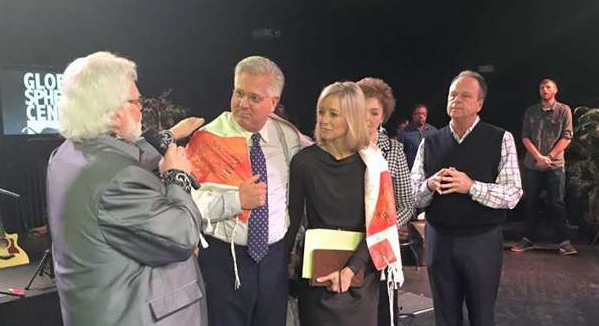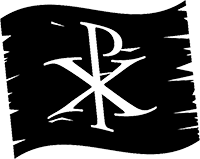Why we're seeing "Mantle Madness"
/
Why are so many preachers now talking about mantles? We hear them figuratively "bestowing a mantle on the next generation," like Hillsong's Christine Cain did at Passion 2015, or Saddleback's Kenny Luck talking about how we have a mantle of leadership. or we see preachers like Chuck Pierce literally give a mantle in the form of a sparkly cloak to Mormon Glenn Beck and his wife during a service in March. Where do we find this bestowing in Scripture? Prophets often wore cloaks called mantles, but there is one place where it is used as a calling for a specific purpose: in 2 Kings in Chapter 2 we see Elisha receiving a "mantle" (a cloak) in a very unique situation from the prophet Elijah, and this act has not been duplicated. Well, until now. Those preachers calling themselves apostles have resurrected this practice as some sort of religious calling from what they say is the Holy Spirit Himself, and it usually involves works.
Got Questions puts it this way:
Although there are variations of the meaning of mantle in the Bible, the main idea is that of a covering such as a cloak or other article of clothing. The New American Standard Bible uses the word mantle in Joshua 7:21 and Hebrews 1:12. In the former passage, the ESV translates the word as “cloak” and, in the latter, “robe.” In biblical times, a mantle was typically a large, loosely fitting garment made of animal skin, probably sheepskin. Several people are mentioned as wearing a mantle, including Job (Job 1:20) and Ezra (Ezra 9:5).
Prophets were known for wearing mantles as a sign of their calling from God (1 Kings 19:13). The prophet Samuel wore a mantle (1 Samuel 15:27). The prophet Elijah “threw his cloak around [Elisha]” as a symbol of Elijah’s ministry being passed on to Elisha. The prophet’s mantle was an indication of his authority and responsibility as God’s chosen spokesman (2 Kings 2:8). Elisha was not confused as to what Elijah was doing; the putting on of his mantle made his election clear.
Some theologians see the mantle as a symbol of the Holy Spirit. For example, in 2 Kings 2:14 Elisha takes the mantle that had “fallen” from Elijah, similar to how Jesus received the Spirit “descending” on Him at His baptism (Matthew 3:16). The audible voice of God in Matthew 3:17 confirms Jesus as God’s chosen servant (cf. Isaiah 42:1). We see a similar “falling” of the Spirit in Acts 8:15–16 and Acts 10:44. It’s only after Elisha takes the fallen mantle that he performs miraculous works (2 Kings 2:14, 21, 24). The Holy Spirit is the Person who empowers God’s people to do God’s work (Micah 3:8; Matthew 12:28; Ephesians 3:16).
The mantle served the practical purpose of keeping people warm and protecting them from the elements. It also served a symbolic purpose, in the case of the prophets, showing they were wrapped in God’s authority. Like all imagery in the Old Testament, the mantle presents a visible representation of a New Testament principle. The mantle can be seen as a symbol of the anointing of the Holy Spirit whom God so graciously gives to all Christians, the people of His choosing (1 Thessalonians 1:5–6; 1 Peter 2:9).


